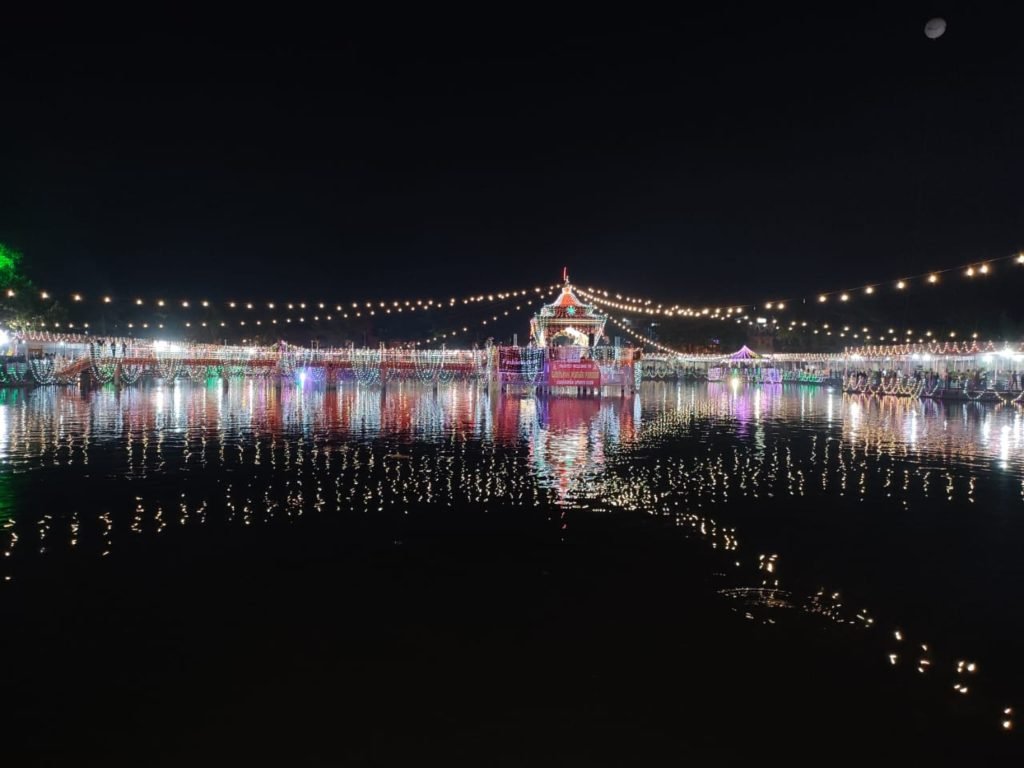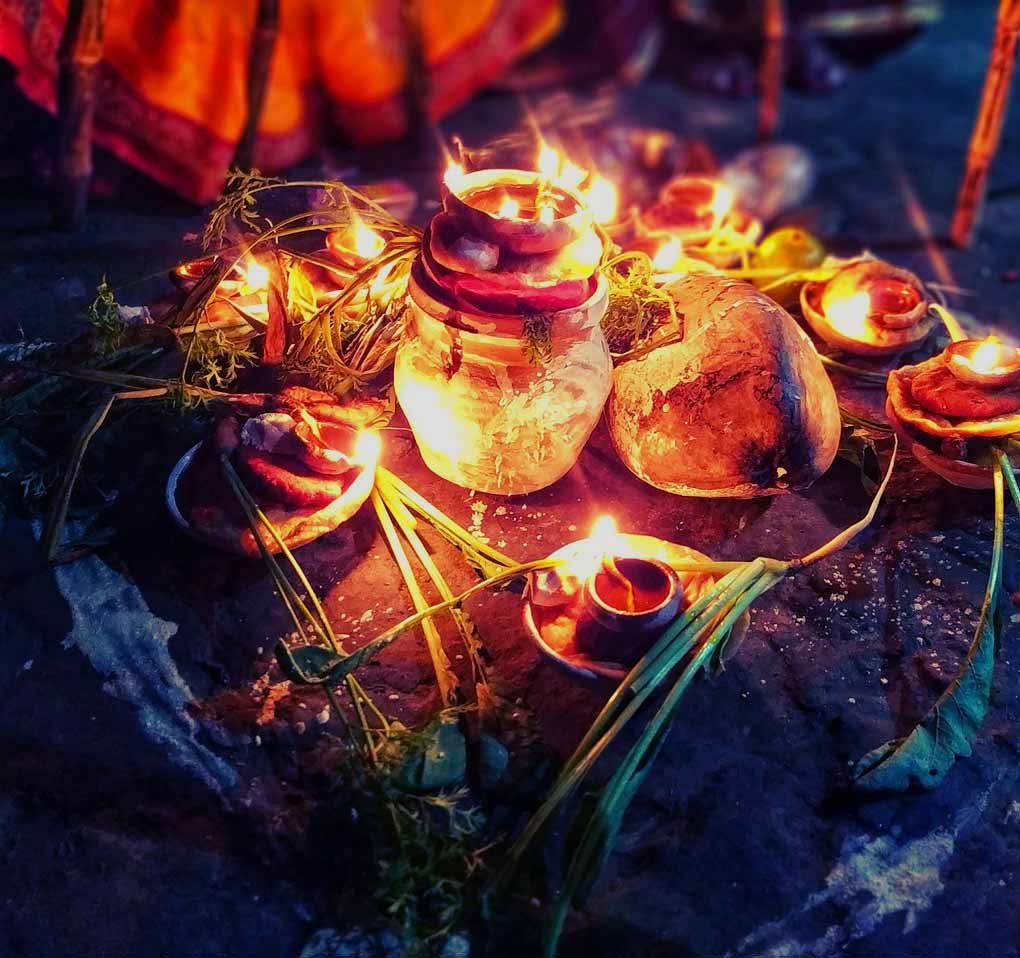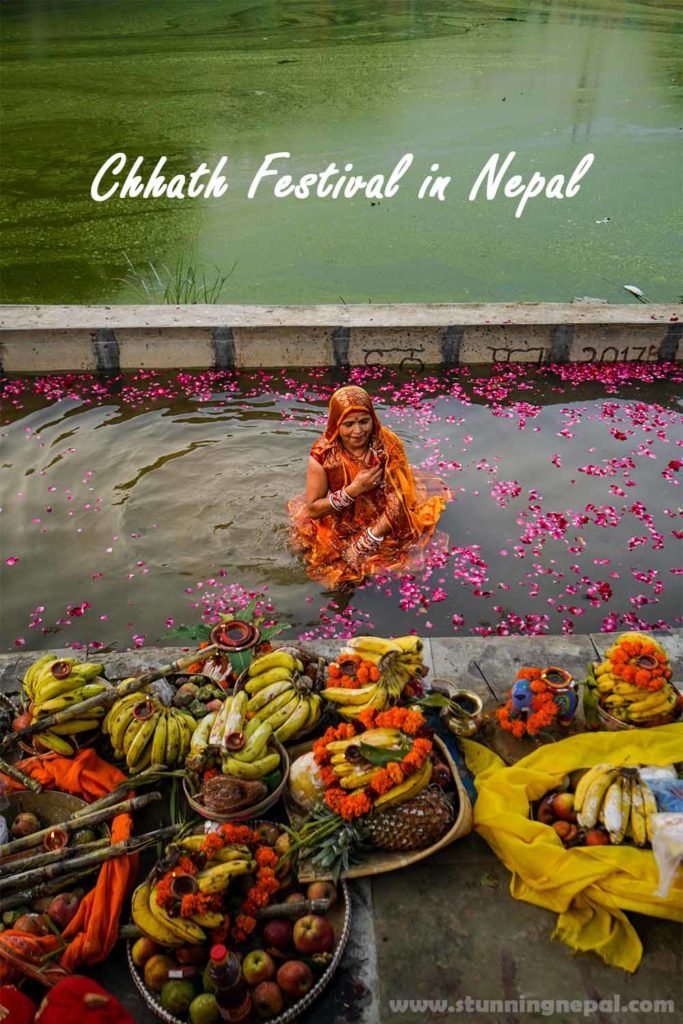Chhath festival in Nepal, also known as Chhath Puja, is a religious festival. Hindu pilgrims located mainly in the Terai region of Nepal have been celebrating Chhath Puja for a long time. It is a festival dedicated to worshipping the Sun and Goddess Chhathi Maiya.
The Chhath Puja is mostly observed in the Madhesh area of Nepal and some Indian states like Bihar, Uttar Pradesh, and Jharkhand.
Both men and women of Madhesh celebrate the Chhath festival with utmost belief and strict rituals that last for four days.
As soon as the Tihar festival ends, the native women of the Terai region start the preparation for Chhath Puja. The Chhath festival starts on the sixth day of the end of the Tihar festival.
During the Chhath puja, the pilgrims fast and worship the Solar deity “Surya” and the sister of Surya “Chhathi Maiya”.
During Chhath Puja, the Sun is worshipped. It is because the Sun is worshipped as a deity. And, it is said that Surya’s sister, Chhathi Maiya visits her brother during this time.
The four days of Chhath Puja carry unique significance. The first day of the Chhath Puja is called Nahaya Khaye. The second day is called Kharna/Lohanda. Similarly, the third day is Sandhya Arghya and the fourth day is Usha Arghya.
Several special dishes are prepared during Chhat. One of the popular Chhath prasad is “thekuwa”. It is made up of a mixture of maida, besan, and gud. It is a delicious sweet prepared only during the Chhath festival.
Most of the Madhesi have migrated to Kathmandu city in search of jobs. Not long ago, no matter where the pilgrims resided in Nepal, they would arrive in their hometown for the Chhath puja. But nowadays, those who migrated permanently to the city continue their culture in the city.

Slowly, the festival gained popularity due to its rich culture and tradition among people of different cultures. Then, it was not only limited to the Maithili ethnic groups. Pilgrims of several castes and cultures began participating in the Chhath festival.
The Nepal Government even awarded holidays to celebrate Chhath Puja. We can find pilgrims gathering around Rani Pokhari and many other rivers to worship Chhathi Maiya during Chhat.
Why is the Chhath festival celebrated in Nepal?
The Chhath festival is a special event mainly among mothers. The mothers fast during Chhath for the prosperity of their children.
The one who fasts and worships during Chhath puja is called “parvaitin” and is usually a woman. However, men are also seen participating in or supporting women in completing the puja. It is one of those festivals in Nepal that eliminates gender biases.
The pilgrims pray for the well-being of their families. It is believed that once you start performing Chhath puja, you have to perform it every year. It is skipped only if the family is mourning.
Fasting during Chhath Puja is said to remove sin. The ritual is also considered an apology toChhathi Maiya, for any mistakes we have made, whether consciously or unconsciously.
As a result of this puja, Chhath Mata bestows good fortune and prosperity on us. It is believed that Chhath Mata forgives those who worship her and fast during the festival.
How is the Chhath festival in Nepal celebrated?
The Chhath Puja is a four-day event. It is said to start by observing the setting sun on the Sixth day of Kartik Shukla Pakchhya and worshipping the rising sun on the seventh day.

After offering Arghya to the sun on the first day, parvaitin consumes prasad, and fasts for continuous 36 hours without even consuming water. Such fasting is called Nirjala Fast in the native tongue.
On the third day, the devotees offer Arghya to the setting sun. It is called Sandhya Arghya. The next day marks the end of the fasting after offering Arghya to the rising Sun.
Let’s break down the process in four days:
Day 1: Nahaya Khaye
The first day of Chhath puja is called Nahaya Khaye. At a nearby river or lake, the pilgrims take dips. Those dips are said to clean their body.
Holy rivers in Janakpur like Ganga, Agni Kunda, Angarajsar, Dhanush, and Dashrath Talau are cleaned and decorated in preparation for the festival.
Satvik Kaddu Bhaat is prepared on this day. It is a mixture of Bottle Gourd and Gram Lentil with Rice. The dish is first served to the deity in the afternoon as Bhog.
Day 2: Kharna/ Lohanda
On the second day, the devotee wakes up early in the morning and cleans the entire house. The parvaitin takes a bath and wears clean clothes.
Then, they offer Arghya to the Sun and savor the prasad made the day earlier. The fasting starts thereafter for a continuous 36 hours without sipping a single drop of water. Some devotees distribute Kheer (rice pudding), Puris, and bananas to the people while fasting.
Day 3: Chhath
The third day falls on Kartik Shukala Shashti. Sandhya Arghya takes place on this day.
The fasting ends on this day so, devotees are engaged in the final processes. They prepare prasad at their home all day.
The whole family accompanies the parvaitin to a riverbank or nearby lake in the evening. They bring several items to offer to the Sun such as fruits, incense, vegetables, coconut, vermillion powder, garlands, flowers, lamps, rice, honey, sandalwood, sweets, pieces of clothes, money, and everything they wish to offer the Sun.
At dusk, the devotees stand in knee-deep water and offer Argha to the setting sun. They also take long dips into the river while chanting mantras dedicated to the Surya deity.
In Kathmandu, Rani Pokhari is open for devotees to perform Argha on this day. Similarly, in Janakpur, Argha is offered in the Bank of Ganga.
In the evening, people sing folk songs in Maithili, Magadhi, and Bhojpuri languages, and dance to those songs with joy and enthusiasm. The folk songs sung on the evening of Chhath reflect how significant their culture is to them.
During the night, Kosi is held. Oil lamps are lit late in the evening after offering Argha to the Sun. The lamps are placed in the middle of five sugarcane sticks.
The five sticks represent the five elements of the human body as described by Ayurveda. The oil lamps signify the solar energy without which no life is possible on Earth.
Day 4: Usha Arghya or Paran
The fourth day is the final day of Chhath Puja. The morning starts with Bihaniya Argha, which means Morning Offering. The parvaitin offers Argha to the Sun from the riverbank.
The festival ends with the breaking of the fast. The devotees eat the prasad and drink some water to break the fast, which is called Paran.
About Chhath Festival Stories
There are several legends associated with the origin of Chhath puja. The Chhathi Maiya, who is worshipped at the Chhath festival, has been mentioned in the Brahma Vaivarta Purana.
According to the myth, it is said that King Priyavrat and Queen Malini had no children. So, Maharishi Kashyap asked him to do a Yagya. Obeying Maharishi’s orders, King Priyavrat performed a Yagya to have a son.
Later, Queen Malini gave birth to a son but unfortunately, the baby died soon. Both the King and Queen were deeply saddened.
That’s when King Priyavrat prayed to Mata Shashthi, the daughter of Lord Brahma. She then appeared to bless the royal with a child by giving life to the lifeless child.
With gratitude, the king started worshipping the goddess Shashthi Devi (also called Chhathi Maiya). So it became a tradition, and people then started celebrating puja as a festival.
Chhathi Maiya and the Surya are also mentioned in the Hindu mythology, Ramayan. When Ram and Sita returned to Ayodhya from banwas, people welcomed them by celebrating Deepawali.
On its sixth day, Ramrajya was established. The same day, Ram and Sita performed Surya puja by fasting. Hence, they were blessed with two sons, Luv and Kush.
FAQs
Who celebrates Chhath in Nepal?
Nepalese people celebrate Chhath. Chhath is a Hindu festival celebrated in Nepal and India. Hindu pilgrims located mainly in the Terai region of Nepal celebrate Chhath Puja in Nepal.
When is Chhath Celebrated in Nepal?
Chhath is celebrated in Nepal in the month of Kartik on the Nepali calendar, which falls around October/November on the Gregorian calendar.
In Which State Chhath Puja is Celebrated in Nepal?
Chhath puja is celebrated all over Nepal, especially in Koshi Province, Madhesh Province state.
Conclusion
Lastly, The Chhath Puja is one of the religious and sacred festivals in Nepal. Celebrated on the sixth day of Tihar, women keep fasting on this day and pray for the prosperity of their families.
If you want to observe the charm of Chhath Puja in Nepal, visit Nepal during October/ November. First, experience the joyous Tihar then, participate in the Chhath Puja with the devotees during Chhat.
Hope this blog was helpful to learn about the Chhath puja in Nepal. If you have any queries or feedback regarding the Chhath festival in Nepal, kindly write it down in the comment box below. I’ll get back to you in no time.
Love this Post? PIN IT now read it later

Everything written is absolutely right.
Best Website for getting information & booking trekkings.